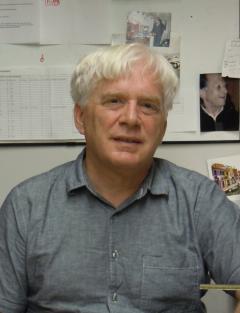The Peter Bullock Lab
Studies of Enhancer Duplications
In humans, enhancer duplications are associated with various diseases, including cancers. To establish the mechanism for the enhancer duplications we are studying enhancer duplications in human polyomaviruses. When purified from persistent infections, the genomes of most human polyomaviruses contain single enhancers. However, when isolated from productively infected cells from immunocompromised individuals, the genomes of several polyomaviruses contain duplicated enhancers that promote a range of polyoma-based diseases. We have proposed a model for the duplication of the polyomavirus enhancers that is based on recent advances in our understanding of; 1) the initiation of polyomavirus DNA replication, 2) the formation of what are termed “long flaps” via displacement synthesis and 3) the subsequent generation of duplicated enhancers via double stranded break repair. Using a range of modern techniques, we are attempting to prove this hypothesis and to determine if similar events underlie the enhancer duplications in the human genome.
Design and Characterization of an Antibody Subdomain for Use in Immunotherapy
Activated T-cells express Programmed death 1 (PD-1), a key immune checkpoint receptor. PD-1 functions primarily in peripheral tissues, where T cells may encounter tumor derived immunosuppressive ligands. Monoclonal antibodies that disrupt the interaction between T-cell derived PD-1 and immunosuppressive ligands, such as PDL-1, have revolutionized approaches to cancer therapy. For instance, Nivolumab is an anti-PD-1 monoclonal Ab that targets human PD-1 and has played an important role in immune checkpoint therapy (it has also been reported to have anti-viral activity). We recently reported the purification and characterization of a ~ 27 KDa single chain variable fragment (scFv) of Nivolumab that targets human PD-1 and blocks binding by PDL-1. Extending this work, we are determining if the anti-PD-1 scFv can be used in diverse diagnostic and therapeutic applications.
